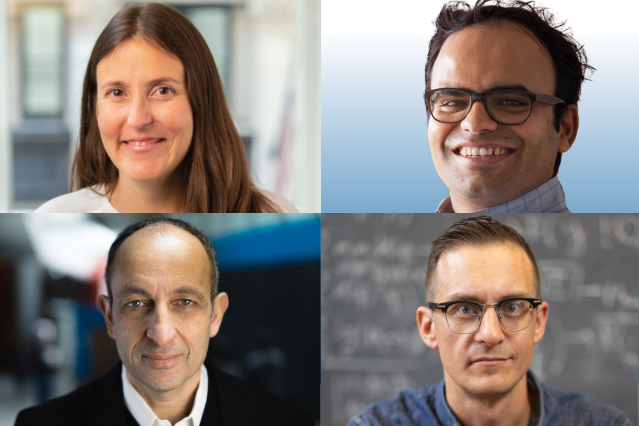
New IDSS and Broad research collaborations in biomedical science
The Eric and Wendy Schmidt Center, under the direction of Caroline Uhler, a core IDSS faculty member, has convened investigators with machine learning and biomedical backgrounds from the Broad Institute, MIT, and Harvard to apply cutting-edge machine learning techniques to research focused on important challenges in biomedical science.
“These projects bring together scientists from interdisciplinary fields to generate large-scale datasets and develop new computational and algorithmic methods,” says Uhler. “This way, we can foster a two-way street between biology and machine learning, two disciplines that have so far largely developed in parallel, which holds the potential to create a new era of biology, yielding a deeper understanding of basic biological processes and improvements in human health.”
“This two-way street between biology and machine learning holds the potential to create a new era of biology, yielding a deeper understanding of basic biological processes and improvements in human health,” says Uhler.
IDSS faculty members including Munther Dahleh, Philippe Rigollet, and Devavrat Shah, and their teams are involved in several of these projects, which are organized under research flagships that focus on critical questions in biomedicine. These research foci target areas where large-scale datasets and new computational methods can help catalog cell activity, identify causal relationships, and lead to a deeper understanding of underlying biological processes – insights which could cure disease and save lives.
The first flagship, titled ‘From genes to cell states: controlling cellular programs,’ focuses on the complex regulatory networks among genes that create the wide variety of cell types and functions. Recent technological advances in genomic perturbation, paired with new computational paradigms, could open a unique window into cell states and cell state transitions. One key aspect of this research explores causal relationships between cells and cell networks.
Projects under this flagship include research into determining cell intrinsic factors to induce desired cell state changes. Devavrat Shah’s group is contributing to define the transcription factor combinations that, when perturbed in human adipose-derived mesenchymal stem cells (AMSCs) ex vivo, give rise to the adipocyte subtypes observed in vivo. These projects will generate a multi-modal catalog of cellular programs to gain an understanding of the paths that can be taken by cells to move between AMSCs and different adipocyte subtypes.
Another area of research under this flagship focuses on determining cell intrinsic factors to induce desired cell state changes. Groups including Munther Dahleh’s are working toward mapping the full regulatory landscape of CD8 T cell subtypes/states. Their goal is to identify the optimal combination of genetic perturbations to obtain the T cell population ratio needed for the resolution of different diseases, with an initial focus on enhancing cancer immunotherapy.
“We are working on developing strategies for genetic perturbation to transform cells from one type to another,” explains Dahleh. “This is a highly complex problem due to the vast number of possible perturbations and the high cost of each experiment.” Dahleh brings his expertise in decision theory and intervention modeling to address this challenge through active learning, suggesting targeted interventions based on existing data and models to maximize information gain.
The second flagship organized by the Schmidt Center, titled “From cells to tissues: controlling cellular networks,” focuses on developing a multimodal foundation model of cells in tissues, where attention between cells can be interpreted causally to map out regulatory networks of cells in tissues.
Research under this flagship includes efforts to determine cell intrinsic and extrinsic programs underlying tissue zonation. Philippe Rigollet’s group joins efforts to map the cell intrinsic and extrinsic programs defining tissue zonation in the liver and the onset of tissue-restricted diseases such as liver steatosis, which are difficult to model in vitro.
“There are so many opportunities to be unlocked through collaborations between biological scientists, medical experts, and machine learning practitioners,” says IDSS director Fotini Christia. “Under Caroline’s leadership, the Schmidt Center has formulated a framework for advancing our understanding not only of genes, cells, tissues, and organs, but of disease and treatment as well. I am excited to see where this research goes, and how IDSS will contribute to it.”



